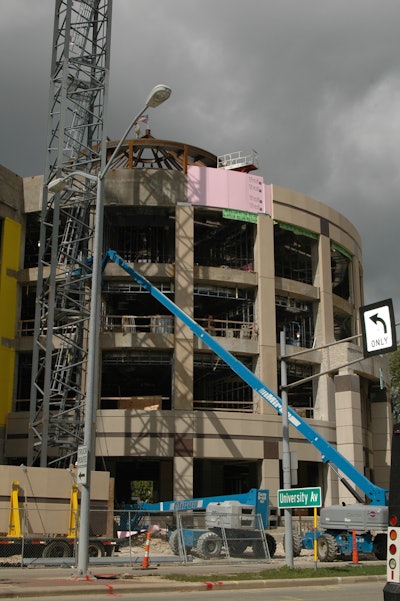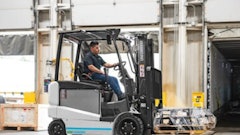
There's been much talk about across-the-board equipment price increases this year, and aerial equipment is not exempt from the discussion. The steadily rising cost of raw materials, as well as the effort to meet Tier 4 emissions regulations, are driving the cost of whole goods up. Just how much of an impact will this have on rental companies? We asked several industry leaders what they see in their crystal ball, and while the answer remains hard to pin down, the consensus is the direction is decidedly up.
"The most significant price increases over the next few years will be on diesel-powered machines which are affected by Tier 4," says Matt Fearon, president of Terex AWP. "Engine costs are increasing depending on the horsepower and there are additional costs associated with engine installations and heat mitigation. Many of the core AWP products are in the process of converting to Tier 4 final in North America. Engine manufacturers have passed those costs on to OEMs, who are passing the costs on to rental companies. Rental companies have a mixed fleet, but they now need to build the increased OEC into their forecasts."
Engine manufacturers have invested heavily in research and development to design cleaner-burning diesel engines that promise emissions that are cleaner than the ambient air in some environments. The downside is these new engines cost more to make, and the end result is an often bigger and bulkier finished product, which can be challenging for whole good manufacturers to accommodate into their designs.
Fearon says Genie is fully committed to embracing the new Tier 4 technology, even though the new engines do require significant resources and reengineering to fit them into the design of equipment. "We're using it as an opportunity to make other improvements to each of the models that are affected," Fearon says. "The implementation is staggered over the next several years and pricing will be available as new Tier 4 models are released."
He adds, "We will continue building previous Tier equipment for regions of the world which are less regulated and do not have the Ultra Low Sulphur Diesel (ULSD) available that is required for these new engines."
Lessening the impact on customers
As much as they can, manufacturers are attempting to avoid passing all cost increases on to customers, but the task continues to become more difficult.
"Manufacturers will simply not be able to absorb this cost. It's a significant change for the industry, but we need to remember the positive impact it will have on both emissions and the environment we all live in," Fearon says. "For example, engineers at Genie found the engine in a 1994 Genie S-60 to produce 60 times the pollutants of the recently introduced Tier 4 final engine in a 2013 Genie S-60."
Brad Boehler, president of Skyjack, contemplates how the effort to meet Tier 4 requirements has affected the progress of equipment design overall. "We all welcome measures that focus on a cleaner environment, but it needs to be considered whether a manufacturer’s efforts on meeting continually evolving emission regulations has detracted from activity that otherwise would have led to newer designs specific to end user needs," he says. "This is especially pertinent in the aftermath of the recent financial crisis and subsequent weakening of the availability of development funds."
He adds, "Having said that, we have to deal with the fiscal realities and at Skyjack, we see our customers as partners. We therefore feel obliged to apply significant resources toward cost reduction to mitigate the upward trend. However, holding pricing is not always possible. I think the other lesson we as an industry need to address is that of the overall timing of Tier implementation throughout the supply base. In our experience with Tier 3 and 4i, the availability of qualified components has sometimes been lacking, making meeting the deadlines extremely challenging."
Some manufacturers are taking a conservative approach to meeting engine regulations, working around the regulations that require engines over 74 horsepower to be Tier 4 compliant. "We're doing some derating of engines to circumvent the tier change," says David Smith, president of Snorkel. "Between some engine modifications and some hydraulic modifications, we can get to where we need to be and get almost the same performance in the machine. Tier 4 is there, it's affecting our resources, but we're not totally changing machines."
No matter how wholegood manufacturers approach the issue, it does demand resources. "Ultimately, it's the best for the environment and it takes a strategy to pull it off," says Frank Nerenhausen, president of JLG. "We have a significant focus on our strategy to bring Tier 4 to the customer in the least impactful way. Our goal is to make it transparent to the customer in their operation of the vehicle as much as possible. We're spending a lot of time with the packaging and bringing the right products to the market at the right time."
How much will prices increase?
As mentioned, there's only so much manufacturers can do to mitigate price increases to their customers when the costs of production are going nowhere but up.
"Everything that's out there is going up, no matter what commodity you look at," says Smith. "Prices are definitely on the rise, and whether we like it or not, with any product under 60 feet, we're basically dealing with commodities. The majority of customers know there's no secret about acquisition cost."
He adds, "Prices could increase 5 to 8 percent this year. We did a price increase in October that took effect in January. That was about 5 percent. I don't foresee us doing anything for the second half of the year, and that has a lot to do with the fact that we've limited our build to be conservative. It's allowed us to have better control over our costs coming in and there's not nearly as much exposure for us in the upper commodity markets because it's a lower amount of volume."
Fearon says the rate of price increases will be directly related to the cost of steel. "There's a lag between steel price increases and manufacturing cost increases, but they are very interconnected," he says. "But rather than just passing that cost on to our customers, we have had an enterprise-wide focus on cost reduction. Our customers have done a good job of raising rates, but we realize that we need to do our part to control costs so they can remain healthy as well.
Nerenhausen says unfortunately, it's sometimes impossible to avoid passing additional costs on to customers. "We certainly try and mitigate the impact to the customer as much as possible, but as technology warrants a price increase for pure cost abatement, that's something we'll look at. We have in the past and we'll have to in the future," he says. "We'll just continue to try to drive costs down in other areas to mitigate the impact of the component upcharge and deliver the best value we can to our customers."
Boehler adds, "Our rental customer base is experiencing good utilization and rental rates; however, when I speak with these customers, it’s clear that although the market is strengthening, they feel limited in how much of an increase in equipment cost they can absorb without passing some of it on to their customers. Overall, while we as an industry work hard to minimize the impact of costs associated with regulations, some degree of impact may be unavoidable."
Manufacturers want their customers to know it's not just engine technology and raw material costs that are driving prices up, it's the overall cost of doing business.
"In today's business climate, the cost of doing business is becoming very hard to project," Nerenhausen says. "Whether it's health care or other types of things, more and more is being added to the pile of things we have to work very hard to offset. It goes beyond product."





















